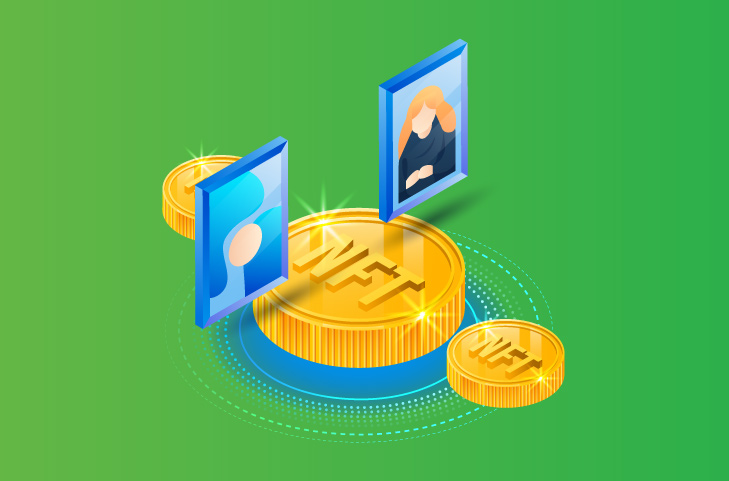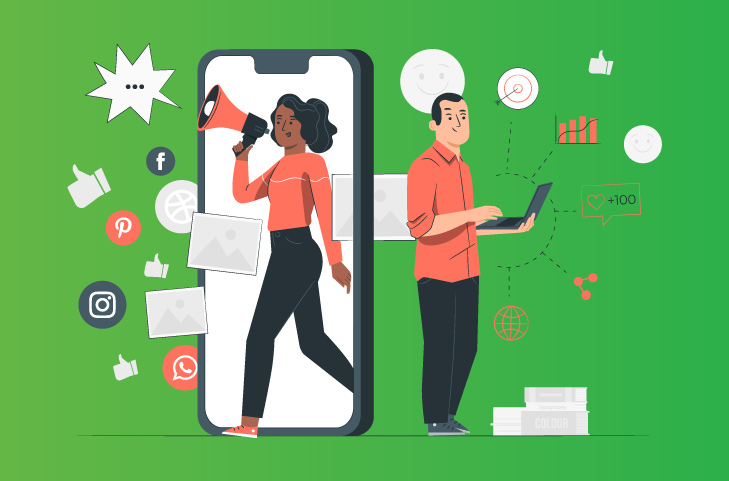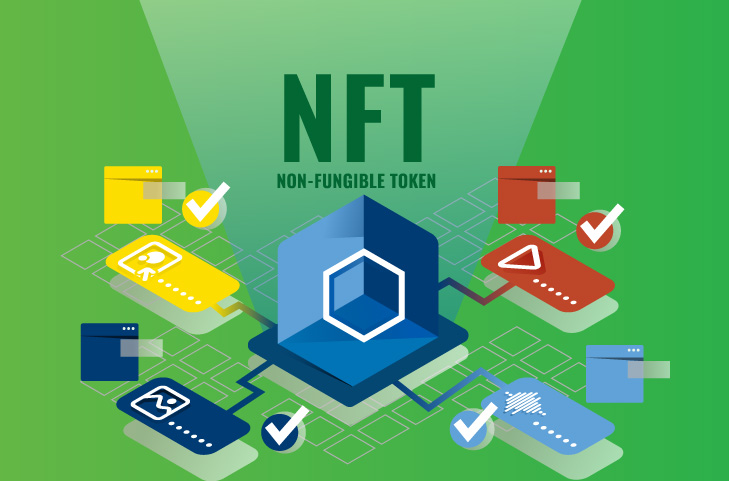There’s nothing like a new cryptocurrency trend to leave you scratching your head, wondering what it’s all about. That’s exactly how most of us felt when non-fungible tokens (NFTs) exploded out of the ether last year.
From art and tacos to music and toilet paper, these obtuse digital assets have been selling like hotcakes. That is, if the hotcakes were worth millions of dollars!
Over the last year, NFTs have managed to pervade every sphere of business, chiefly marketing. And given their rising popularity (both positively and negatively), it begs the question – what should B2B marketers know about NFTs? Should they use them?
Some believe it’s a bubble poised to pop; some believe it’s here to stay. No one knows for sure.
So, let’s understand this rising crypto-mania in detail and how it’ll affect B2B marketing.
NFT 101
NFTs stand for non-fungible tokens. Of course, that doesn’t make it any clearer.
Alright, let’s start with the non-fungible part. It more or less means a thing can’t be duplicated or replaced with anything else and that it’s unique.
For instance, Bitcoin, the infamous cryptocurrency, is fungible, meaning you can replace one bitcoin for another, in the same way, that you can replace one dollar bill with another one.
One-of-a-kind trading cards, however, are non-fungible. You can’t just trade a legendary Pokémon card with one of the starters. Both have significantly different values.
And that’s the philosophy NFTs operate on. It’s a form of a digital receipt, minted from digital assets like artwork, music, videos, and even tweets. Yes, Jack Dorsey, Twitter’s co-founder, sold his first-ever tweet for more than $2.9 million by making it an NFT.
Also, these receipts can’t be duplicated since they exist on a blockchain, specifically the Ethereum blockchain. Simply put, NFTs are collector items, only that the items are digital and not feasible.
Only one person can own an NFT at a time, which can be easily traced and verified through the blockchain. This feature has especially helped artists, who now can sign their artwork by encasing their signature in the NFT metadata.
How Could NFTs Affect B2B Marketing?

Though NFTs have been heavily used for B2C marketing (read Taco Bell’s Taco GIFs), there aren’t many established examples of NFTs in B2B marketing.
Are there no interesting marketing opportunities? Have marketers not realized the full potential of NFTs?
If it’s the latter possibility, it opens the door for exciting marketing innovation. Here are some ways how NFTs could become the next big thing in B2B marketing.
Creating Unique Brand Experiences
As the digital space continues to expand, it’s hard appeasing customers in a crowded online space. And NFTs could be key to providing concrete value in a highly personalized way.
Think of it this way: NFTs can be a bridge that can connect you to your customers directly – ownership is a powerful idea, and it establishes a closer relationship between your brand and the customer.
When curating an NFT campaign, the first question is to ask, “What does my target audience want.” Based on this answer, you can offer incentives spanning various price points. The important thing is that your customer must feel like a valued member of your brand.
For instance, Pizza Hut, McDonald’s, and Pringles were among the first brands to create campaigns revolving around NFTs, selling digital pizza and burger art to their customers, not only creating a unique experience but also raking in profits.
Supporting Cause Marketing

NFTs have some negative connotations tied to them. But you can counteract these sentiments by leveraging the model to support a cause, just like Taco Bell did. They created digital taco arts, which were sold out within 30 minutes. All proceeds went to the company’s scholarship initiative. Under Armour has also launched NFT-assisted charities in the past.
Developing and Expanding Your Community
Art brings people together. So, in a way, NFTs could be perceived as community-builders. They can connect creators, fans, and buyers around specific passions and themes. And if your company relates to those themes and passions, the customer growth implications go without saying.
Word of Caution
NFTs are undoubtedly more than a mere passing fad. However, whether they’re the future, that’s clearly up for debate. For every positive they offer, there are twice the negatives, the most worrying one being the environmental impact of mining these NFTs.
And there’s an argument for sustainable mining using renewable energy. However, even renewable energy is limited. And given the sheer volume of worldwide crypto farming, funding the mining operations using renewable energy will inevitably force other industries to use fossil fuels, thereby not changing a thing in the long run.
This is on top of the worldwide silicon shortage the crypto mining operations have caused. Since mining primarily uses GPUs for computation, mining farms stock up on hundreds of GPUs at a time, which has led to scarcity for regular consumers. And these GPUs use a ton of power. So much so that the worldwide annual crypto-mining energy usage is more than the annual energy usage of Argentina.
Also, there’s been discourse regarding the ownership sensibilities of NFTs. Sure, you get a digital receipt for your assets, which can’t be duplicated. However, that only covers the ownership part and not the usage. For all reasons and purposes, these digital assets can be accessed and used by anyone on the internet.
For instance, you might be already familiar with the screenshot or “Right click + Save As” meme NFTs have given birth to. It’s literally that easy. When you boil it down to the bare bones, owning an NFT amounts to owning a car, which anyone can take out for a drive. You just have receipt of it. In a sense, NFTs popularity is tied to the “flex-value” you get when you own one.
Besides, NFTs have also been tied to tax evasion scandals, which add another layer of negative sentiments over an already badly perceived addition to the crypto world.
The Bottom Line

NFTs, when used correctly, can become a beacon that brings customers to your brand’s shores. It allows artists to protect their assets, marketers to expand their brand presence, and investors to grow their wealth.
That said, its intended usage doesn’t match how it’s being utilized currently. NFTs have given rise to unsustainable energy practices, something that the world could do the least of at this moment. Moreover, it has also begun affecting other industries, such as the silicon sector, which is facing a massive chipset shortage. And that’s just one affected industry.
In this article, we’ve only scratched the surface of NFTs’ marketing potential. If you’re intrigued, you can dig deeper and explore other marketing opportunities for yourself. However, it’s for the best that you use these crypto elements sparsely and sustainably.


